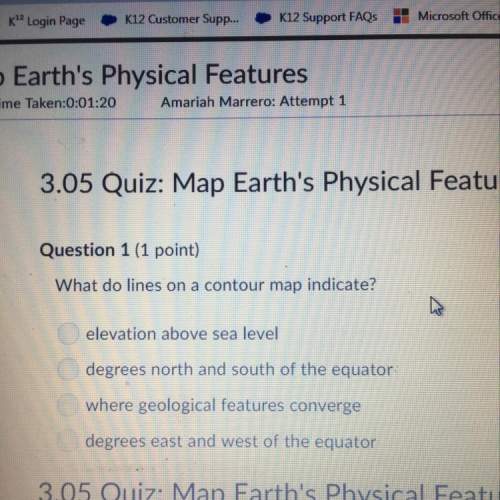Chemistry of Life Study Guide
· Define matter-
· How does weight differ from mass?
· De...

Chemistry, 28.10.2020 22:40 reinasuarez964
Chemistry of Life Study Guide
· Define matter-
· How does weight differ from mass?
· Define element-
· Name the two main regions of the atom-
· What particles are contained in the nucleus and what are their charges?
· What particle is found in the electron cloud and what is its charge?
· What determines the atomic # of an atom?
· If you know the number of protons in an atom, how can you determine the number of electrons?
· If you know the number of protons in an atom, how can you determine the number of neutrons?
· Discuss isotopes and give an example of an isotope-
· How do you determine the atomic mass of an element?
· Why do elements tend to react with other elements?
· Which electrons determine how an element will combine with another element or elements?
· Chemical bonds store .
· How do covalent bonds form?
· How do ionic bonds form?
· In reactions the amount of product must the amount of reactants.
· Most of an organism’s energy comes from what in foods?
· Define exergonic (exothermic) reactions-
· Why is cellular respiration an exergonic (exothermic) reaction?
· Define endergonic (endothermic) reactions-
· Why is photosynthesis an endergonic (endothermic) reaction?
· Be able to identify exergonic (exothermic) and endergonic (endothermic) reactions on graphs.
· What is the function of catalysts?
· What are the biological catalysts of reactions in living things?
· Define solution-
· Define solute-
· Define solvent-
· solutions have water as the solvent and are important to .
· Acids produce what type of ion?
· Bases produce what type of ion?
· A pH of is neutral.
· List the pH range of an acid.
· List the pH range of a base.
· If a solution has a pH of 6, what would the new pH be if the concentration of H+ were increased by a 100 times?
· How many times stronger is an acid with a pH of 3 compared to an acid with a pH of 6.
· What do cells consist mostly of?
· The chemical reactions of all living things take place in the environment of the cell.
· List the 4 properties of water.
· Discuss why water is a polar molecule.
· Discuss how water being the universal solvent is so important to living things. Give an example.
· Describe the property of water cohesion and adhesion.
· Explain an example of how cohesion and adhesion is important to living things.
· Discuss the role of water as a temperature moderator using the concept of high heat capacity.
· How is the above property of water important to living things?
· Explain why ice floats using the 4th property of water from you notes.
· Why is this property of water important to living things?
· What macromolecule are most enzymes?
· Can enzymes be re-used? Explain.
· Can enzymes work on any type of substrate? Explain.
· What ending is common to the name of enzymes?
· Discuss how enzymes speed up chemical reactions using the concept of activation energy.
someone plz help

Answers: 1


Another question on Chemistry


Chemistry, 22.06.2019 02:00
Write a hypothesis that answers the lesson question, “while observing a chemical reaction, how can you tell which reactant is limiting? ” hypothesis: if a substance is the limiting reactant, then . . because . .
Answers: 1

Chemistry, 22.06.2019 11:00
The twister and runaway train are two coasters at the same amusement park. both coasters start at the same height. the coaster for the twister is twice the mass of the coaster for the runaway train. which roller coaster has greater gravitational potential energy at the start of the ride?
Answers: 1

Chemistry, 22.06.2019 12:30
How many grams of magnesium metal will react completely with 8.3 liters of 5.5m hcl? show all work
Answers: 1
You know the right answer?
Questions

Mathematics, 01.10.2019 06:00

Geography, 01.10.2019 06:00

History, 01.10.2019 06:00

Social Studies, 01.10.2019 06:00


Social Studies, 01.10.2019 06:00

Mathematics, 01.10.2019 06:00



Mathematics, 01.10.2019 06:00

History, 01.10.2019 06:00

Mathematics, 01.10.2019 06:00

Mathematics, 01.10.2019 06:00

History, 01.10.2019 06:00

Mathematics, 01.10.2019 06:00

Mathematics, 01.10.2019 06:00


History, 01.10.2019 06:00


Mathematics, 01.10.2019 06:00




